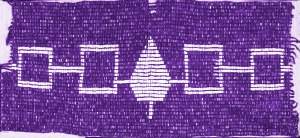 The Great Law of Peace and the symbolism of the pine tree are both significant aspects of American culture and history. The Great Law of Peace, also known as the Constitution of the Iroquois Confederacy, is a governing system that was established by the Haudenosaunee (also known as the Iroquois or Six Nations). The Iroquois Confederacy was a political and cultural alliance formed by six Native American nations: the Mohawk, Oneida, Onondaga, Cayuga, Seneca, and Tuscarora. The Great Law of Peace provided a framework for governance, conflict resolution, and the preservation of individual rights and collective harmony within the Confederacy. Benjamin Franklin would use concepts of the Iroquois Constitution when working on our own U.S. Constitution.
The Great Law of Peace and the symbolism of the pine tree are both significant aspects of American culture and history. The Great Law of Peace, also known as the Constitution of the Iroquois Confederacy, is a governing system that was established by the Haudenosaunee (also known as the Iroquois or Six Nations). The Iroquois Confederacy was a political and cultural alliance formed by six Native American nations: the Mohawk, Oneida, Onondaga, Cayuga, Seneca, and Tuscarora. The Great Law of Peace provided a framework for governance, conflict resolution, and the preservation of individual rights and collective harmony within the Confederacy. Benjamin Franklin would use concepts of the Iroquois Constitution when working on our own U.S. Constitution.
The symbolism of the pine tree holds great importance in Iroquois culture and represents concepts such as peace, strength, and unity. In the Iroquois creation story, it is believed that the first humans were born beneath a great pine tree. The pine tree is considered the “Tree of Peace,” and its branches are said to represent the nations of the Iroquois Confederacy. The roots of the tree symbolize unity and interconnectedness among nations. According to Iroquois tradition, the founding fathers of the Iroquois Confederacy buried their weapons beneath the roots of the Great Tree of Peace. This act symbolized their commitment to resolving conflicts peacefully and maintaining harmony within the Confederacy. The pine tree and its associated symbolism continue to be respected and revered as a powerful emblem of peace, strength, and unity among the Iroquois people.
It is also worth noting that while the pine tree holds significance in Iroquois culture, it also had symbolic importance during the American Revolution. The pine tree represented resilience, resourcefulness, and the fight for independence during that historical context.
 The Pine Tree Flag of the American Revolution is also known as the “Appeal to Heaven” Flag. It featured a white flag with a green pine tree in the center. The flag had its origins in New England, particularly in the state of Massachusetts, and was used during the early years of the American Revolution by the Continental Navy. The Pine Tree Flag was notably flown by the first ships commissioned by George Washington’s administration in 1775. The origin of the design came from General Washington’s secretary, Colonel Joseph Reed. In a letter dated October 21, 1775, Colonel Reed suggested a “flag with a white ground and a tree in the middle, and the motto AN APPEAL TO HEAVEN to be used for the six ships.” On July 26, 1778, the Massachusetts General Court established the flag of the “State Navy.”
The Pine Tree Flag of the American Revolution is also known as the “Appeal to Heaven” Flag. It featured a white flag with a green pine tree in the center. The flag had its origins in New England, particularly in the state of Massachusetts, and was used during the early years of the American Revolution by the Continental Navy. The Pine Tree Flag was notably flown by the first ships commissioned by George Washington’s administration in 1775. The origin of the design came from General Washington’s secretary, Colonel Joseph Reed. In a letter dated October 21, 1775, Colonel Reed suggested a “flag with a white ground and a tree in the middle, and the motto AN APPEAL TO HEAVEN to be used for the six ships.” On July 26, 1778, the Massachusetts General Court established the flag of the “State Navy.”
The six original ships commissioned by George Washington were:
- USS Alfred: The USS Alfred was a 24-gun ship of the line, originally a merchant vessel named Black Prince. It was one of the first ships purchased by the Continental Congress and was later renamed Alfred in honor of Alfred the Great.
- USS Andrew Doria: The USS Andrew Doria was a 14-gun brigantine. It was named after the Genoese admiral Andrea Doria, who was known for his naval expertise.
- USS Cabot: The USS Cabot was a 14-gun brigantine, also known as a brig. It was named after the Italian explorer John Cabot, who was credited with discovering North America.
- USS Columbus: The USS Columbus was a 24-gun ship, originally a merchant vessel named Nonsuch. It was renamed Columbus in honor of the Italian explorer Christopher Columbus.
- USS Providence: The USS Providence was a 12-gun sloop. It was named after the city of Providence, Rhode Island, and played a significant role in various naval actions during the Revolutionary War.
- USS Washington: The USS Washington was a 32-gun ship of the line, originally named HMS Scammel and previously part of the British Navy. It was captured by the Continental Navy and renamed Washington in honor of George Washington.
These six ships formed the initial core of the Continental Navy, and their contributions helped pave the way for the establishment of a permanent naval force in the newly formed United States.
Pine lumber was important to the world’s shipbuilding. It would be the arrival of the Pilgrims in Plymouth in 1620 that led to the harvesting and exporting of pine lumber. From 1652 to 1682, colonists adopted the pine tree as a symbol on flags, and currency, including variants of the Flag of New England and coinage produced by the Massachusetts Bay Colony. The New England Eastern White Pine was prized for shipbuilding because of its quality and height. The phrase “An Appeal to Heaven” was often seen above or below the pine tree on the flag. This phrase originated from the political philosopher John Locke’s writings, particularly his book “Two Treatises of Government,” which greatly influenced the American colonists. He maintained that when all other options had been exhausted, the colonists had the right to appeal to a higher power, such as God, for their cause. Locke’s principles were:
- Natural Rights: Locke argued that individuals possess natural rights that are inherent and preexisting, including the rights to life, liberty, and property. These rights are not granted by the government but are derived from human nature.
- Limited Government: Locke advocated for the concept of limited government, emphasizing that governments are established to protect individuals’ natural rights. He believed that governments should have specific powers granted by the consent of the governed and should not infringe upon people’s rights.
- Social Contract: Locke proposed the idea of a social contract, which implies that individuals willingly enter a political society and consent to be governed. According to this concept, the government’s legitimacy comes from the consent of the governed, and its purpose is to safeguard the rights and well-being of the people.
- Right to Revolution: Locke asserted that if a government violates the natural rights of its citizens and fails to fulfill its obligations, the people have the right to resist and overthrow that government. This right to revolution is a last resort for the protection of individual liberties.
- Religious Tolerance: Locke advocated for religious tolerance and freedom of conscience. He believed that individuals should have the liberty to practice their religion without interference from the government. Locke’s ideas on religious freedom greatly influenced later thinkers and the development of liberal democratic societies.
Now back to the history of the Pine Tree in America. Britain needed a reliable supply of 24-inch diameter trees for the Royal Navy. Within the colonies, government surveyors would mark trees to be supplied to the Crown (Royal Navy) with a “broad arrow symbol.” The British Crown claimed ownership of all white pine trees in the American colonies through the Timber Act, seeking to maintain control over the valuable resource for the Royal Navy’s shipbuilding. The act restricted colonists from cutting down or using white pine trees over a certain size without obtaining a special license and paying fees to the Crown. Colonists preferred to sell the trees on the open market for a higher profit. This forced seizure of colonial trees by Britain and led to the “Pine Tree Riot.” The Pine Tree Riot, also known as the Pine Tree Disturbance, was a protest that took place in New Hampshire in 1772. It was a response to the enforcement of the British Crown’s controversial Timber Act, which aimed to control the cutting and harvesting of white pine trees1https://en.wikipedia.org/wiki/Pine_Tree_Riot.
The Pine Tree Riot was sparked by the arrest of several New Hampshire residents who were caught cutting down white pine trees without a license. On April 13, 1772, a group of about forty armed colonists, led by local blacksmith and Revolutionary sympathizer, Ebenezer Mudgett (also known as Captain Jack), gathered in Weare, New Hampshire. They confronted and overpowered the British-appointed deputy sheriff, Benjamin Whiting, and his men, who were attempting to enforce the Timber Act. The protesters forcibly released the prisoners and seized their seized tools and equipment. They then marched to the home of loyalist and mill owner James Carr, where they toppled and destroyed his sawmill. The rioters symbolically raised a flag bearing a pine tree and the words “An Appeal to Heaven,” reflecting their grievances and the sentiment of resistance to British authority. This would represent one of the early acts of defiance against British control in the American colonies. It demonstrated the growing tension between the colonists and the British Crown over issues of taxation, control of resources, and individual rights. The event helped fuel the revolutionary spirit and resistance that would later contribute to the American Revolution. Therefore, the pine tree came to represent the strength, resourcefulness, and independence of the American colonies.
Leading up to the Revolutionary War, the pine tree would become a symbol of colonial anger and resistance. Less frequently, its motto also read “An Appeal to God.” According to legend, the Pine Tree Flag might have flown at the Battle of Bunker Hill in June of 1775. The pine tree would also be used on a red field with the green pine tree in the upper left corner. One of the most famous incidents involving the flag was during the Battle of Saratoga in 1777 when Benedict Arnold, then a general in the Continental Army, raised it over his headquarters.
 Over twenty years ago, the editors of Lostpine.com were reflecting on how to choose a domain name and a logo for our website. Coincidence had placed our history of owning three homes over our lives on streets that had the word “pine” in them. And here we were, again, on a street and neighborhood not only containing the word pine but filled with large white pines, the types used for masts of ships. While coincidence guided our home locations, God’s providence guided our desire to publish a blend of God’s Word and American History. You see, it is history that holds God’s very footprints, and provides us with the assurance that God is real. (See ABOUT US – on why we too chose the pine as our symbol)
Over twenty years ago, the editors of Lostpine.com were reflecting on how to choose a domain name and a logo for our website. Coincidence had placed our history of owning three homes over our lives on streets that had the word “pine” in them. And here we were, again, on a street and neighborhood not only containing the word pine but filled with large white pines, the types used for masts of ships. While coincidence guided our home locations, God’s providence guided our desire to publish a blend of God’s Word and American History. You see, it is history that holds God’s very footprints, and provides us with the assurance that God is real. (See ABOUT US – on why we too chose the pine as our symbol)
- 1
